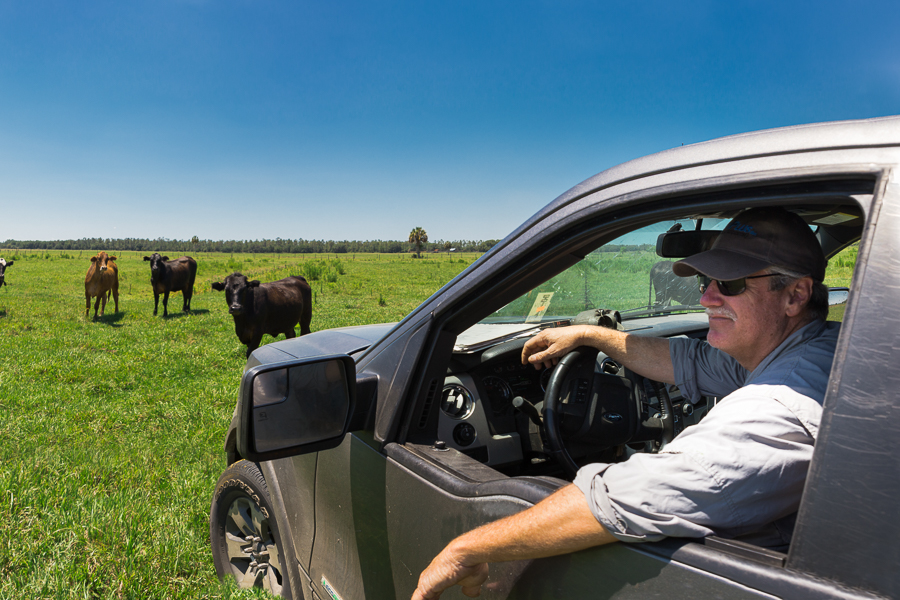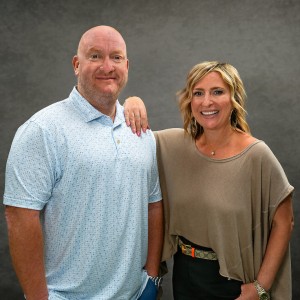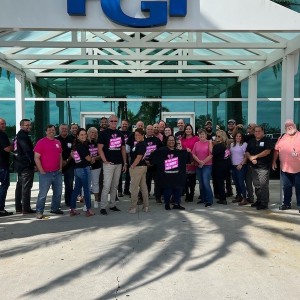Cattle scatter immediately as Chuck Turner drives his pickup into a grazing area at Hi Hat Ranch. He expects a few to run up to get some feed from the back of the vehicle, but today the animals seem wary—perhaps it's the ride-along guests in the vehicle—but within a few minutes, one brave bovine steps away from the herd and approaches. The Brahmin influence can be seen in the drooping ears, and the hides of most of the beasts bear the Hi Hat brand: a connection of five straight lines in the shape of a top hat. At peak times, this Sarasota ranch will provide a home to several thousand cattle; about 500 to 600 calves roam here right now. The livestock makes up a substantial portion of some 1-million head of cattle in the state of Florida and in Turner’s thoroughly biased assessment, these are among the very best. “These are some fancy cattle, boys,” Turner makes clear. “They don’t get much better in Florida.”
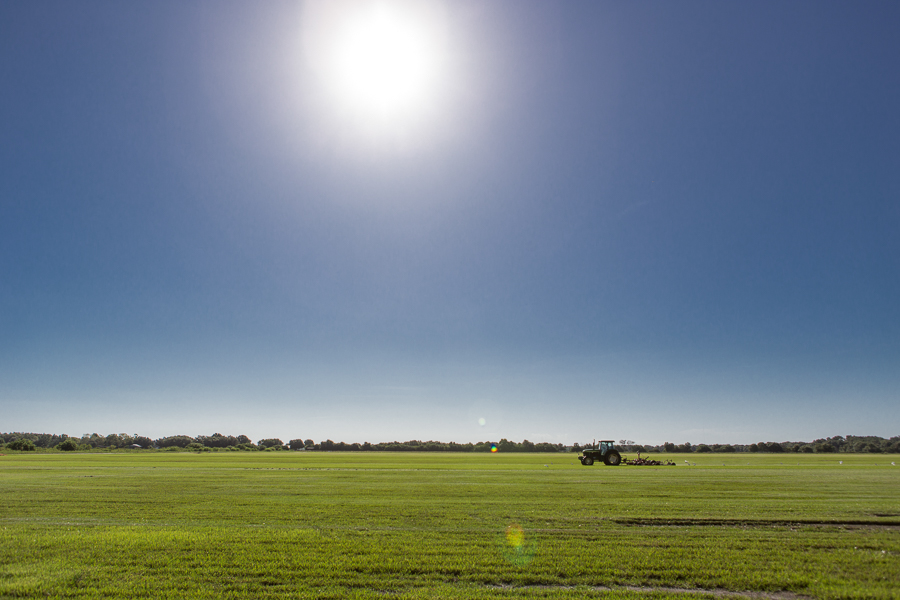
The livestock here take up just a portion of the estate, which also hosts citrus, tinder and sand mining operations. Financial demands of the day require certain diversity in the acreage of a modern ranch, and Turner maintains a careful balance to meet whatever the market demands. And yes, a part of the land has been repurposed to host newly constructed ranchette homes. But make no mistake, the bulk of this 10,000-acre farmstead hosts the grazing, threshing and agriculture operations that many city slickers might not imagine take place this side of the Rio Grande. You can still see the bastions of Sarasota’s agrarian history, from the fairgrounds on Fruitville Road a couple miles from downtown to the many subdivisions named for long-picked groves. But even today, you can find working ranches east of Interstate-75. Bus loads of migrant workers roll in at dawn as staffs of workers, many living on property, spend the day manning fields, pulling stumps and tending cattle. The Hi Hat stands as one of the largest and longest continuously working ranches in Southwest Florida, but it’s hardly the only one. Just to the south of Bee Ridge Road, you can find Turner Ranch, a sister operation to Hi Hat; closer to Arcadia, you will find the Longino Ranch. Even parts of Lakewood Ranch still operate as ranches, with Schroeder-Manatee Ranch Farms maintaining a herd of cattle and leasing acreage for crops.
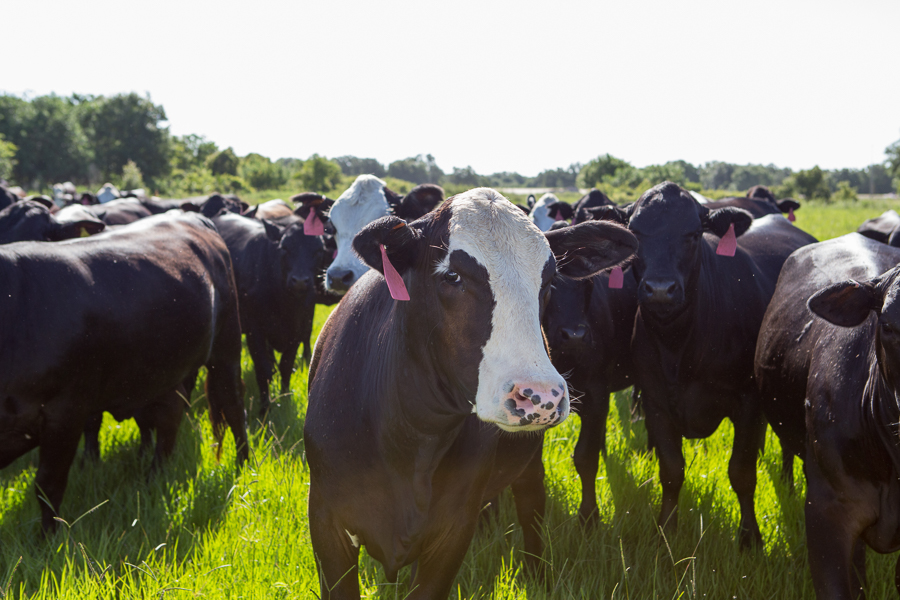
But for the rugged individuals working the land each day, usually in shifts that run from dawn ‘til dusk, this is the world they know, and often the only one they can imagine. “It’s a lot to do, and it’s long hours,” says Cliff Coddington, general manager of the Longino Ranch. But, he says, if you love wildlife, if you relish the chance to eat fruit picked fresh off a citrus tree or you appreciate watching a calf be born and raised to maturity, then ranching makes for a rich existence. “It’s not a job; it’s a life,” Coddington says.
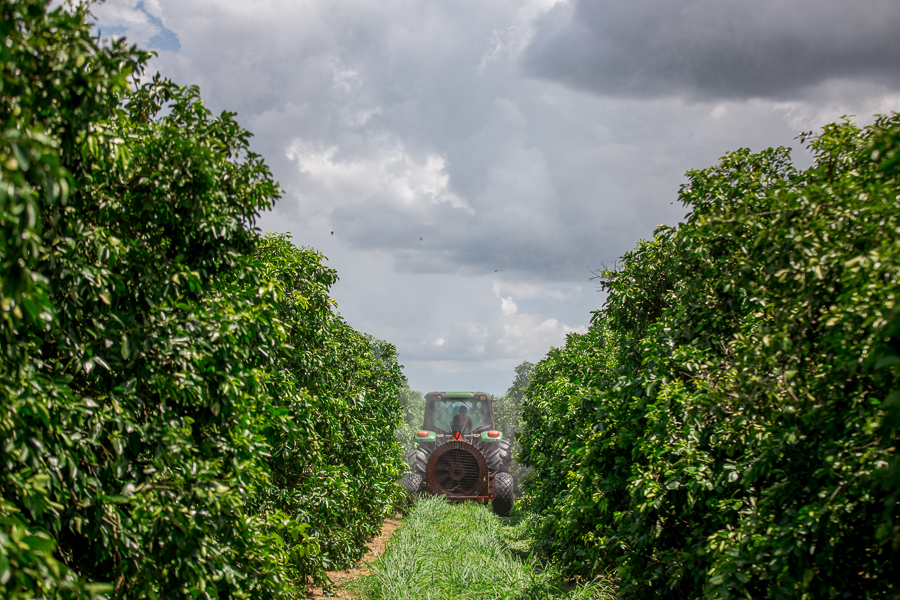
The buzz of a crop duster soaring no more than 30 feet overhead greets guests who drive onto the Hi Hat at 9am. This plane already made several passes over the field but will touch down several more times today to refill tanks full of Melathion to spread over the citrus trees. Men on the ground carefully mix the right balance of chemicals so that the insecticide won’t destroy the fruit, but the spraying of these crops remains a high priority for ranchers today. Turner explains that the citrus industry the past few years has been impacted significantly by “greening,” a condition where disease spread by bugs stunts the development of plants.
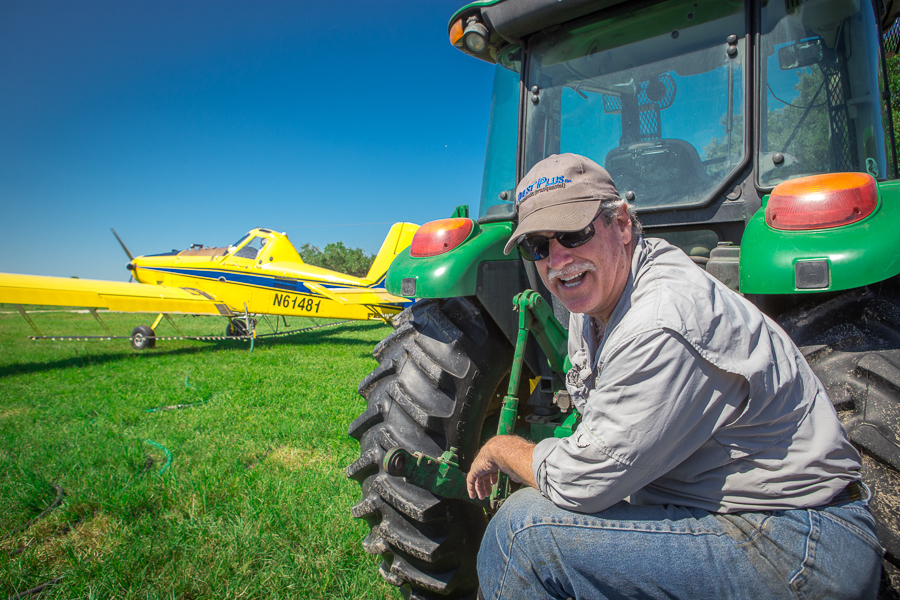
It’s impacted every ranch operation in the region; Coddington says the market demand for citrus remains high right now, but farms can’t keep up. “Pricing isn’t down,” he says. “It’s about production.” For Turner, keeping his crops healthy has become a daily struggle: “It’s a constant battle,” he says.
Fred Stewart, grove foreman at Hi Hat, says the dry season makes this entire process especially challenging. The team does irrigation for the crops three times a week; the ranch on average uses 60,000 gallons per day. Of course, the freezing season is no better. Stewart says he occasionally works 32-hour shifts to make sure crops get properly protected when cold fronts threaten the ranch with freezing temperatures. “Daily operations here can change at any point,” he says. The grounds have to stay warm in the winter, bug-light in the summer. You have to make sure trees aren’t burning up in the sun, but also that canopies don’t block so much light that trees won’t grow at all. Weeds can choke out crops, insects can stop them from growing at all. “We’re just always trying to stay ahead of the game,” Stewart states.
But the citrus crops are hardly the only concern of the day. Turner drives his truck around every corner of the ranch every few hours, making sure the livestock being moved from place to place have a clear path, that pine trees continue to sprout tall and the earth continues to be tilled for the next round of seeding. His cousin Rick Turner handles much of the groves and dirt management, but it’s Charles Turner checking on staff and keeping operations steady even on hot days.
For 24-year-old Rashad West, the experience remains somewhat new. An Arcadia native, he’s been around agrarian culture his whole life and Stewart, a family friend, recruited West to take his first ranch job at Hi Hat earlier this year. “I like being out here,” he says. What are his daily tasks? “Whatever Mr. Stewart needs.” Today, that means manning water pumps and keeping the crop duster filled with a mix of nutrient-infused water and Melathion.
Elsewhere on the farm, Austin Davis, a 21-year-old who once played baseball at Alabama State University, can be spotted walking through crops cutting down Brazilian peppers, an invasive weed that creates constant headaches. Davis was set to work on the land from April through July. He plans to go back to school and earn an agriculture business degree from a Florida university, and then may return to the ranch with skills to work the business side as well as the fields.
But the ranch life for many of the men operating machinery and carrying seed through local ranches has been all they have known for decades. Maynard Plank, 59, operates earth-moving equipment doing contract work for a number of ranches in the region. He can be found tearing down pine trees and clearing fields, prepping areas for new tree plantings while harvesting standing trees and old stumps for tinder. And Larry Scarbrough, a 64-year-old cattle foreman, works the grounds at Hi Hat in early summer collecting materials from the fields that can be sold for making gunpowder. Yes, gunpowder. Tree stumps left to cure for a couple years can be pulled and then bought. Chemical solutions are used to render powder from the stump components once buried in the earth.
For Coddington, ranching is a family tradition. For six generations, his family has worked in the Sarasota-Manatee area. “I was born and bred into ranching,” he says. Whether it’s citrus or salt mining, raising cattle or farming sod, Coddington has been involved at all points of his career. While he has worked at Longino now for nearly 12 years, he used to work at Schroeder-Manatee Ranch. But he also helps maintain his family’s own ranch outside of Bradenton. There, a herd of cattle can be found grazing through most of the year.
It’s not easy these days, Coddington acknowledges, to get into the ranching industry. Land in Florida runs at a premium cost, so buying enough land to open a new farm large enough for crops and cattle requires major capital. That wasn’t the case during the land boom era when most ranches in Southwest Florida first established themselves. And for the operations already in business, that land cost creates tremendous pressure in another direction. Schroeder-Manatee Ranch still keeps animals on the property and mines salt for sale, but the name today is most synonymous with the growing community of Lakewood Ranch. Jason McKendree, though, can remember whe\n ranching was everything out here. As the cattle and leased land manager for SMR Farms, the 41-year-old has worked the land here since he was still in high school, and can still be spotted herding cattle across University Parkway if you drive through the community at just the right time.
“I got to see the ranch as a whole,” McKendree recalls. “I grew up going around the ranch with a family that was already there.” He no longer lives on the land, but did for 15 years. Today, he manages leases on roughly 300 acres of land where carefully screened reputable farmers plant vegetables. “It’s a different strategy of income for us,” he says.
And it’s one that increasingly gets deployed on modern ranches to make use of acres. Coddington says most of his family ranch has been leased to other farms and growers. It’s easier to lease existing land for farming than to buy it, Coddington says; many ranches today also serve as an agrarian sort of landlord.But there is a well-known market for the land, just not for farming. Tom Dabney, a Sarasota businessman who married into the Turner family and stays involved in the business even since his wife’s passing, devotes much of his own attention to The Forest at Hi Hat Ranch, a subdivision of high-end homes sold to people looking for a rural lifestyle but not a ranching life. “These are estate homes on estate lots,” he says. The developer isn’t interested in bringing high-density development to the ranch; the smallest homes sit on three-acre sites. Intense deed restrictions provide a suburban feel for the land despite the fact it neighbors active farming and mining operations. But the homes sell for upwards of $1 million. It takes a lot of orange juice to turn that much profit.
But Dabney gets irritated when people describe agricultural property owners as land barons. The Forest hardly looks like urban sprawl, even if a handful of extra car trips happen on Bee Ridge Road thanks to the community’s existence. But there is no aggressive expansion into the residential industry. Dabney notes that certain ranching industries like tree farming require years of planning. “We still plant orange trees that won’t harvest for five years and pine trees that we won’t harvest for 20 years,” Dabney says. “We are working on a 40-year horizon.”
In the Sarasota 2050 Plan, a long-term future land-use plan for the county, Hi Hat has been designated as one of few “villages” of clustered housing allowed east of Interstate-75, but it will be years before that gets realized here. Jensen moves forward with a village development at Lakewood Ranch and Neal Communities has started work on other communities in south Sarasota County, but there are no aggressive plans to grow The Forest into a large portion of the ranch.
But the plan does exist. None of Turner’s children work on the ranch and all pursue other professional futures as things stand today. That may change—Turner never imagined life on the ranch until he was 30 and his father fell ill—but it’s likely there won’t be further generations of Turners running the land here. Of course, other ranches have a different future plotted. Coddington acknowledges his family farm faces market pressure all the time, and it may be that the time comes when the greatest value in the land will be its sale. But at the Longino, a conservation easement on the land has established it will remain an agricultural property forever.
SMR Farms does maintain its own herd of cattle. Right now, McKendree says, there are 1,000 “mama cows” and 350 heifers, some yearlings fresh off their mothers’ milk and still without a calf and some waiting for a second. McKendree says until the calves reach three years old, they aren’t ready to take care of themselves. As the cows move around some 7,500 acres of land reserved for cattle, he often moves through heavily developed parts of Lakewood Ranch. “They cross across University Parkway on a regular basis,” he says. “It’s modern-day cowboying in the middle of Lakewood Ranch.”
Despite the old-school image of farming, modern science also revolutionizes the ranching craft. McKendree works hand-in-hand with the University of Florida Institute of Food and Agricultural Sciences on efficient water management techniques. Native bahiagrass has largely been replaced with limpograss that allows cattle to be maintained in more dense acreage; the bahiagrass allowed about one cow per four acres while new limpograss allows almost four times that many animals on the same land. “We are changing with the times,” McKendree says.
Right now, most cattle raised in the state of Florida end up being transported to western states like Texas and Oklahoma. The long-term bovine residents of area ranches are typically females producing babies that get shipped to other areas more capable of feeding animals in adulthood before they get slaughtered for meat. “It’s cheaper to ship the cattle to the corn than the corn to the cattle,” Turner explains.
But Coddington hopes that too can evolve. As the local food movement and the Fresh From Florida label become increasingly important to the industry, he hopes more cattle can be raised to maturity in Florida. Humidity makes it difficult to grow corn and similar grains in mass quantities right now, but that may change with ranching advancements. “I don’t know how well we could feed cattle in the southern counties, but once you get into North Florida, you have rolling hills and you can do a lot better,” he says. Florida likely will never raise cattle in the numbers of places like Kansas and Nebraska, but Coddington imagines more cattle could reach maturity in the Sunshine State than do so today.
The ranching life can take its toll on the body. Turner recalls a time he brought his own children out for horse riding and one horse was acting wild. Turner climbed on it to calm the animal down before he would let his son ride. The beast responded by bucking Turner off, nearly paralyzing him. The event put Turner in the hospital for weeks, but he now can literally claim to have a spine made of titanium steel. These days, Turner can assign hard labor to staff, but a major part of Turner’s job remains making sure the land around Hi Hat serves the best use available. “Every pasture has different soils,” he explains. “I’m always looking for opportunity.” And so he drives through a wooded area where workers tear stumps of cut trees from the ground to sell the wood and then prep the land for more pine trees to be planted in the future. It all looks like unusable property, but Turner has transformed land like this into fertile crops. “I make 'sh*tty' look pretty,” he says with pride.
Parts of the Hi Hat look utterly untouched by man, and much of it never will be. Wetlands can’t be developed under state law, but Turner also has a side business of wetland mitigation; when developers do get approval to disrupt the natural environment, new wetlands get made here to mitigate the environmental, impact. If you look at Sarasota County’s comprehensive plan, known in government circles as Sarasota County 2050, you see that the future of Hi Hat Ranch isn’t all livestock or citrus or pine trees or sand mines. This is one of three places where a “village development” can be placed east of I-75. It may be the last generation of Hi Hat ranchers works the land now.
As he stands at the edge of a major sand mine on the property, Turner lays out a vision for when the time comes that there is no more sand to sell. He dreams aloud about plans to make the greatest bass fishing lake in all of Florida. It will be catch-and-release, he says, and will bring ecotourists from around the globe. He can picture a resort here, maybe one where he can enjoy a retirement with a line cast from the side of a boat. “This will be the best bass lake in all of Florida when I’m done with it,” he says.
But until then, he will keep this ranch roaring, raising citrus for the cocktails and beef for the steakhouses a few miles a way.





